Design Issues Series
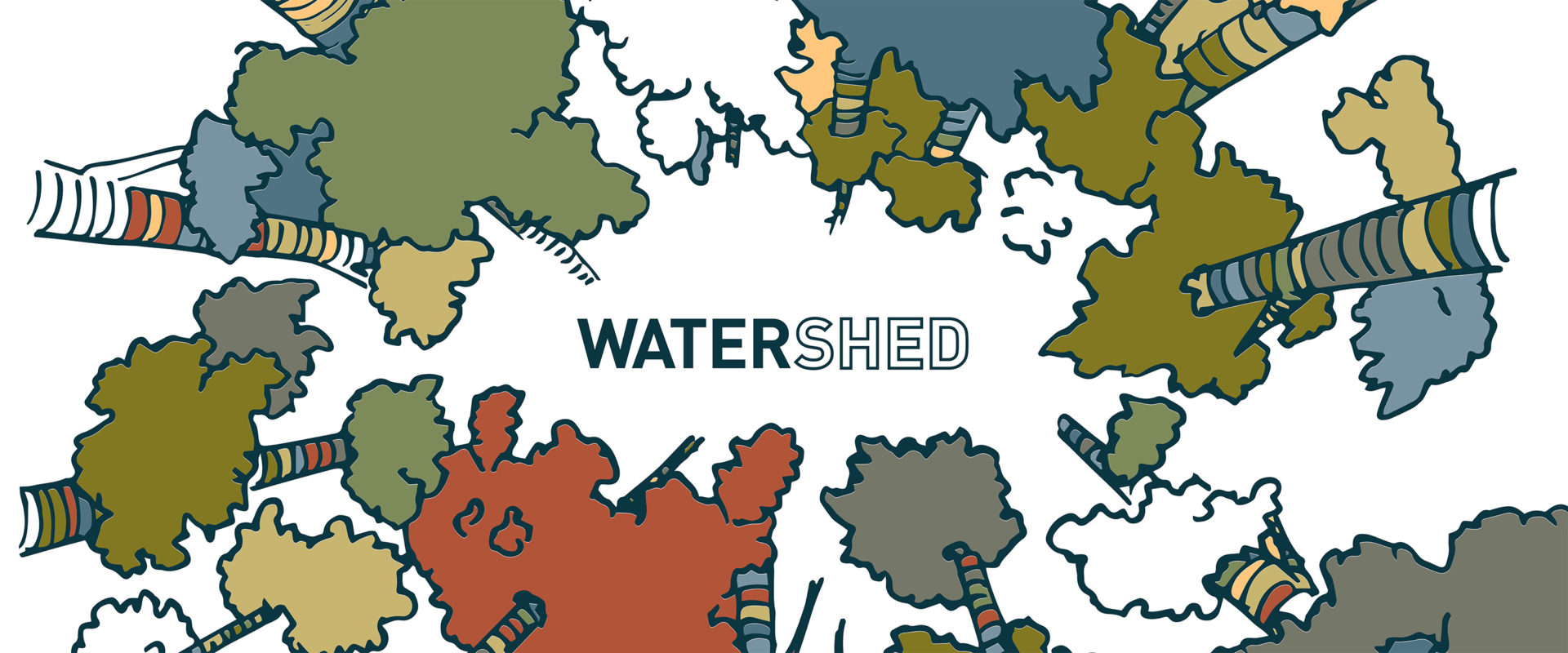
Engage. Explore. Discuss.
GBBN’s annual Design Issues Series (DIS) is a collaborative exhibition between all offices. Each year the goal of (DIS) is to step back, take notice, and represent a specific topic in a new light and foster lively and creative public discourse. By overlapping architecture and community, (DIS) seeks to grow a culture of design.
(DIS) 2022: Watershed
Architects are in the habit of using the term “built environment” to refer to spaces that have been shaped by human interventions. The phrase tends to conjure images of cities, high-rises, houses, residential streets, hospitals, and highways.
But even seemingly “natural” landscapes – like farms and nature preserves – are built out with roads, fences, and other infrastructure.
In a time of global warming, every environment is shaped by human activity. That also means that every person’s experience of nature is shaped by human relations and human decisions; and, as a result, the inequities that structure our society are reproduced in seemingly “natural” experiences.
In 2021 GBBN’s Design Issues Series committee hosted a conference on Environmental Justice, inviting local leaders and activists to discuss the issues they’re addressing in the US cities we call home. Based in cities that are connected by the Ohio and Mississippi Rivers, water was a big theme in the discussion. From stormwater runoff and flooding to sewer backups, our discussion highlighted the importance of water and how its behavior is shaped by design.
Called “Watershed,” (DIS) 2022 extends the investigation of 2021, while focusing what connects us: water. We investigated how this resource is managed, its history, the protection and comfort it affords, and the communities it leaves vulnerable. We also partnered with organizations working to mitigate water-related environmental issues to learn more about these issues while forwarding their work.
To document what we found, we developed an Augmented Reality installation that visualized the environmental inequities of our midwestern cities neighborhood by neighborhood. This formed the centerpiece of a travelling exhibit that we used to engage our communities in Cincinnati, Louisville, Minneapolis, and Pittsburgh.
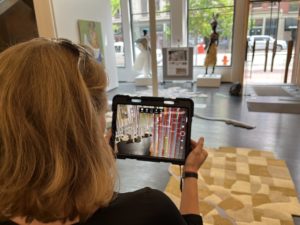
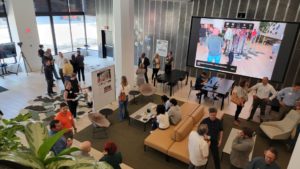
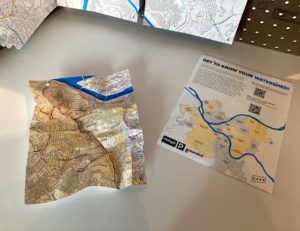

2022 Watershed Review
(DIS) 2021: Environmental Justice
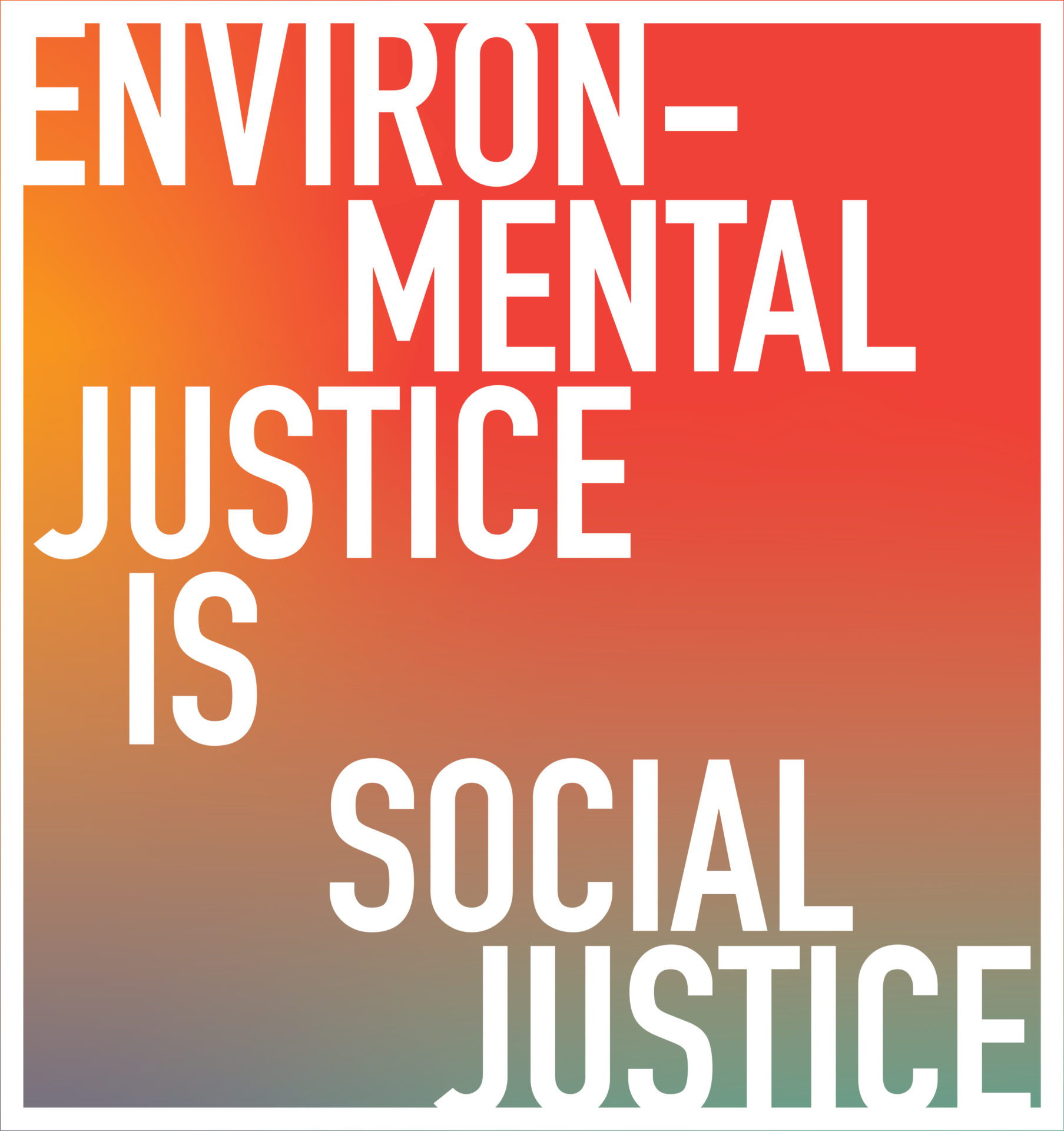
Building Justice: Social Justice is Environmental Justice
- Environmental Justice is Social Justice.
- We have to build both. We have to build them for everyone. And we have to do it together.
This year has been a time of crisis, but also one of hope. We’re in the midst of a global pandemic, widespread economic disruption, multiple political crises, and an epidemic of racialized police violence – all of which is taking place against the backdrop of an ongoing climate crisis. But 2020 has also witnessed unprecedented numbers of people in the streets. Movements for racial justice, gender equality, and the rights of LGBTQI+ people are not only demanding an end to police brutality, but they’re linking those demands to calls to investment in education, the creation of affordable housing, measures to strengthen our democracy, and climate justice.
Responding to this unprecedented time, GBBN’s annual, community-centered research initiative—Design Issues Series (DIS) 2020: Perspective—asks how social and environmental justice—or their absence—are embodied in the built environment. Located in Cincinnati, Louisville, and Pittsburgh, the Ohio River not only links each of our US offices, but it links the local struggles for social and environmental justice that waged along its banks.
By creating a forum for communities that are most affected by environmental harms, DIS 2020 seeks to amplify their knowledge of how race, class, environment, and health intersect to shape—and be shaped by—development policies and design decisions. We’re looking to connect environmental justice initiatives across the region while educating the broader community and ourselves about these initiatives. While bringing into focus the local effects of a global climate crisis, we hope that DIS 2020 will foster partnerships between designers and those communities most exposed to effects of the climate crisis.
2021 Environmental Justice Symposium Review
(DIS) 2020: Perspective
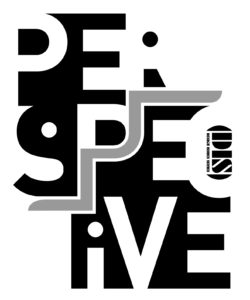
As architects and designers, we are constantly striving to cultivate our abilities, broaden our perspective, and enhance our communities. For the last five years DIS has sought to serve these goals by engaging our communities in important design questions about the value of public space, the potential of prefabrication building technology, the role of screens in our built environment, and so on.
And (DIS) has grown… From an initial exhibition of existing work in 2015 to 2019’s 3D projection mapping exhibit, which crowdsourced material from around the world, (DIS) has grown a lot. To celebrate the first five years while taking steps to ensure its ongoing vitality, we used 2020 to take a step back and gain perspective on the practice.
• We conducted a review of the first five years of (DIS).
• Held internal and external focus groups to understand DIS, its value to the firm and the community, its potential for improvement, etc.
• We reviewed its (DIS)’s founding documents.
Based on the feedback, (DIS) 2020: Perspective rewrote the rulebook to integrate fresh perspectives on what the project can do from year to year to enrich GBBN’s design culture and contribute to our communities.
(DIS) 2019: Screen Time
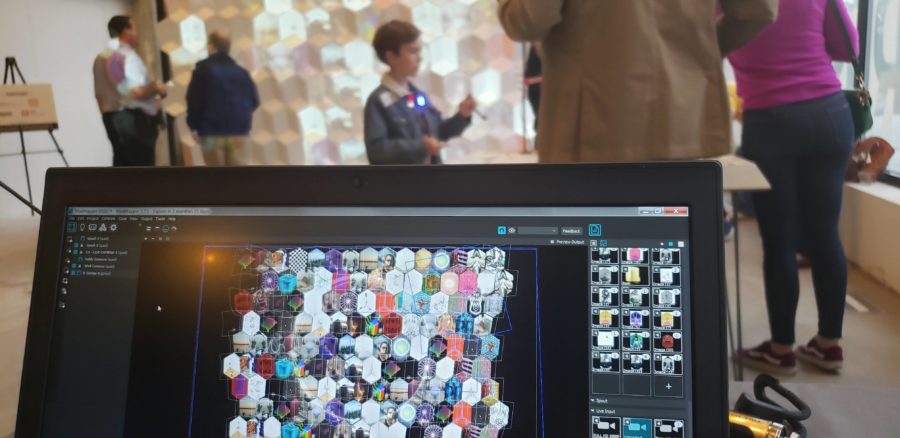
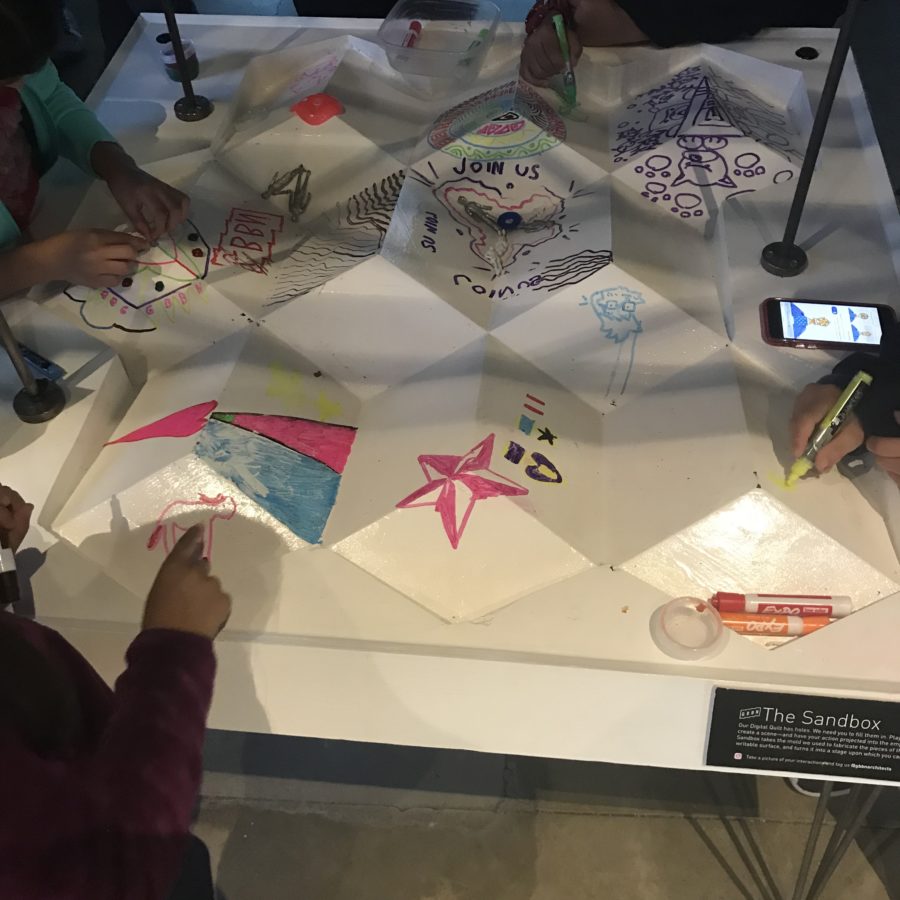

DIS: Screen Time: This year’s DIS focused on screens. Screens have become so thoroughly woven into the fabric our daily lives. Omnipresent in the built environment, screens also help build that environment, so we asked:
- How do screens shape our spatial experience?
- Do they distort our understanding of space and scale? If so, how?
- What role do they play in the creation of the built environment?
The Process: DIS: Screen Time explored these questions by crowdsourcing individual submissions that fill out a common template (with videos, animation, hand drawn, or digitally-generated images), which would then be projected onto screens at different scales. After being assembled, the images were mapped onto 3D surfaces—a digital quilt, a sandbox, and a photobooth—corresponding to three different scales that architects move between during the design process (drawing, model, real space). The exhibit also featured interactive components to enable spectators to take part in the production of images. This allowed attendees to play with projection-mapping technologies in order to distort their sense of scale and deepen their appreciation of the role of screens in the design processes that shape our world.
The Tour: Featuring 160+ submissions from design students, professionals, and amateurs from around the world, the exhibit opened at Makerfaire Louisville, moved north to Pittsburgh’s Unblurred Art Crawl, headed back south for BLINK Cincinnati, and returned to Louisville for Junior Achievement Inspire – a career fair for 10,000+ 8th and 9th graders. It closed with an exhibit and lively artists’ panel at 21c Louisville. It was amazing to connect with our communities—near and far—as we explored these aspects of design. Thanks again to our partner Iontank, who not only informed our approach to the display but also lent us projectors for the tour. Thanks also to AIA Cincinnati, Couch Brewery, first build (1B), Grainworks Brewing Company, and Phipps Reprographics for your help making this exhibit possible.
2019 Screen Time Review
(DIS) 2018: Parallax Pavilion
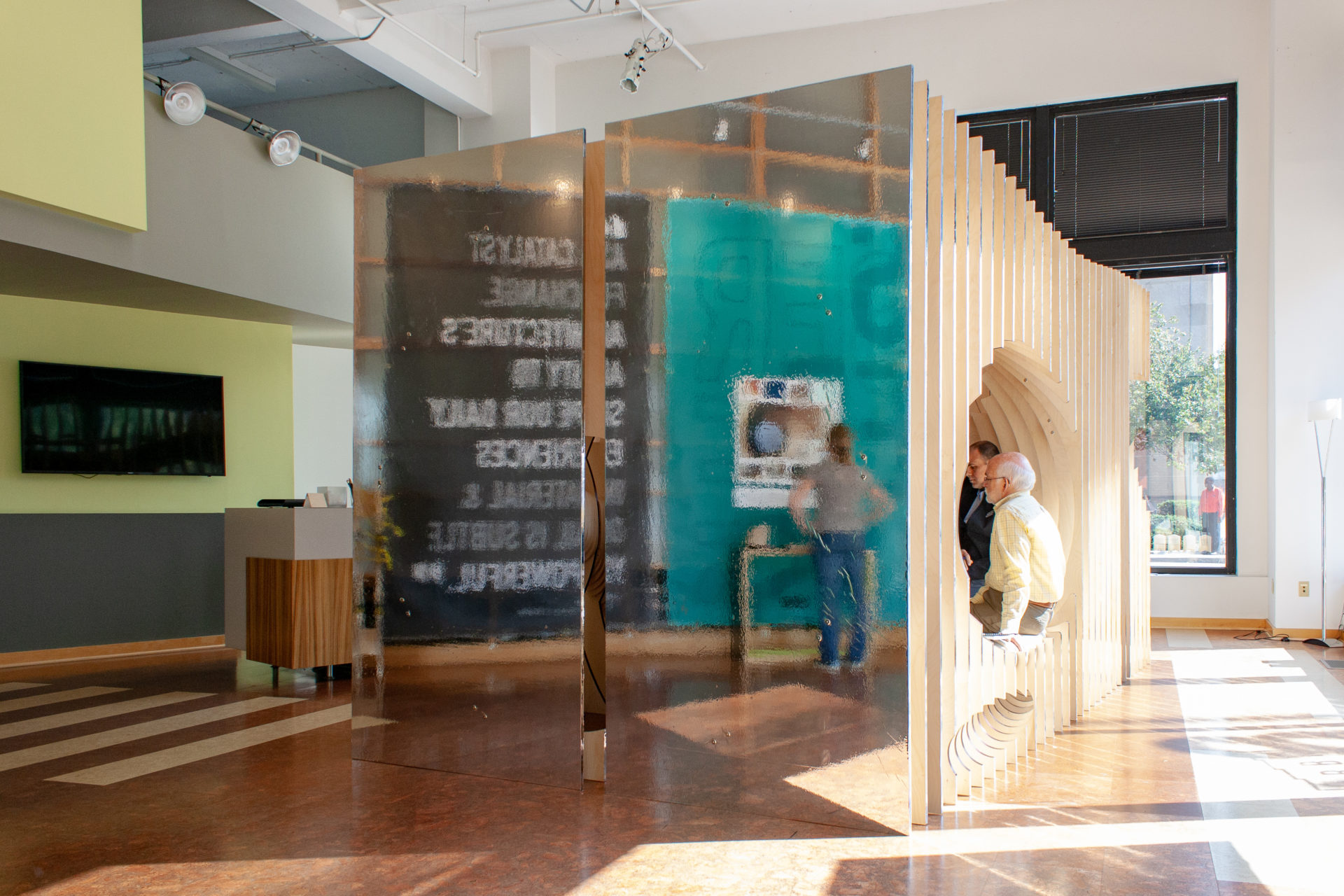
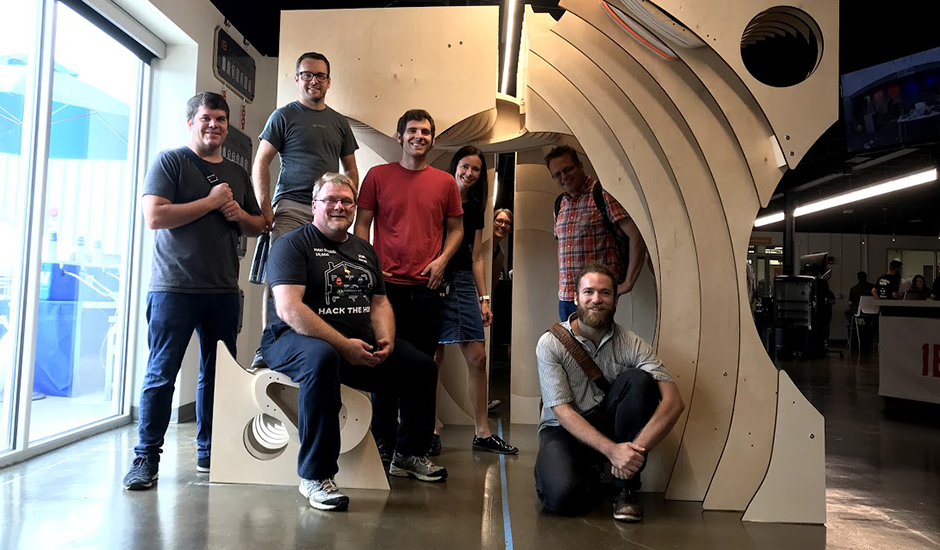
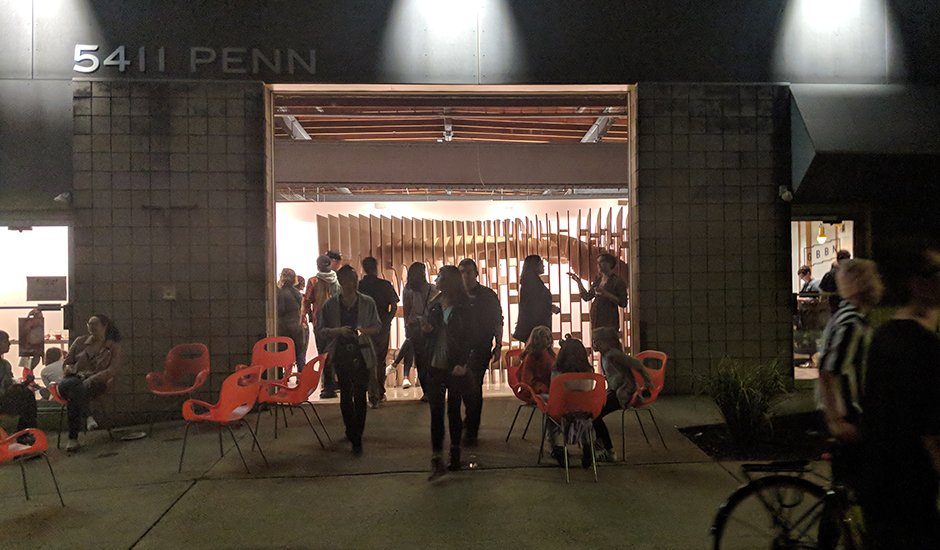
For our 2018 Design Issues Series (DIS) project, we turned our usual design process on its head to create the Parallax Pavilion, an 8’x8’x’16’ temporary installation that manipulates and celebrates perception. Bigger than a model, but smaller than a building, the Parallax Pavilion is more than an object: it’s an experience that highlights the power of design to shape how people see and interact with the built environment.
Inspired by Cadavre Exquis (Exquisite Corpse), a 20th century Surrealist artist parlor game where multiple players contributed pieces to a final whole, five teams from across our three U.S. offices contributed to different phases of the project–each team deliberately kept blind to what would be passed to them. Each team had to be as concise as possible, knowing they could only provide a limited explanation of their work to the next team. As a result, teams had to be careful about what was shown, drawn, or modeled.
It also forced us to accept the interpretation and transformation of the work by colleagues. Challenging the status quo is part of GBBN’s culture and upending the way we usually work was revealing. For example, working this way forced us to let go of some of the control we’re used to, but led to a surprising outcome: It allowed us all to be authors of the work. Additionally, the project was an opportunity to incorporate other goals, like advancing how we work with local fabricators.
To CNC mill the 607 separate pieces that make up Parallax Pavilion, we turned to Riverside Architectural Millwork. Working closely with Riverside’s team enabled us to harness their unique expertise during the process. Another important consideration? As drafting and rendering software become increasingly sophisticated, rigor around constructability must keep pace. If we can dream it, can we, actually build it? (Yes! But duly noted: Plywood. Is. Heavy.)
Our work culminated in five amazing events from Louisville to Pittsburgh and back again. We launched the Parallax Pavilion’s regional tour at the Louisville Mini Maker Faire and shared our design process during Cincinnati Design Week. It made stops at open houses in our offices in Cincinnati and Pittsburgh before returning to Louisville for Junior Achievement Inspire – a career showcase for over 10,000 8th and 9th graders who are beginning to imagine their future professions. We’ve had a blast sharing the Parallax Pavilion with our communities. Many thanks again to our happy hour exhibit sponsors: Riverside Architectural Millwork, MadTree Brewing, Couch Brewery, and Phipps Reprographics, Inc.
Download (DIS) 2018 Book
(DIS) 2017: Pre Fab Lab
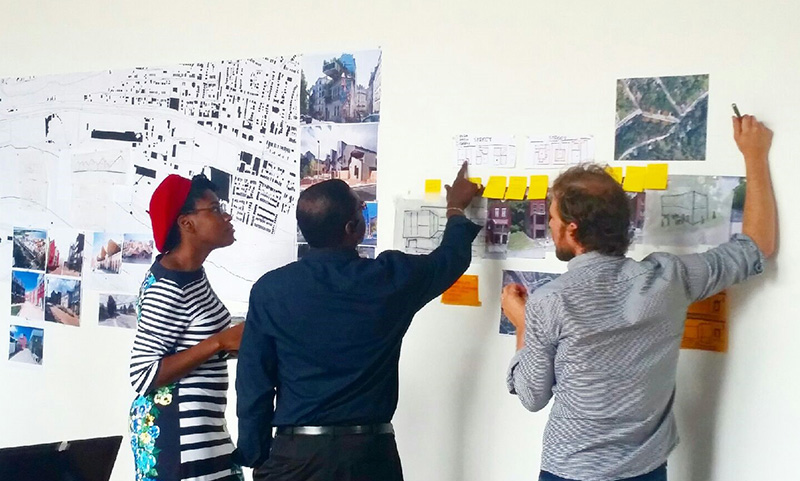

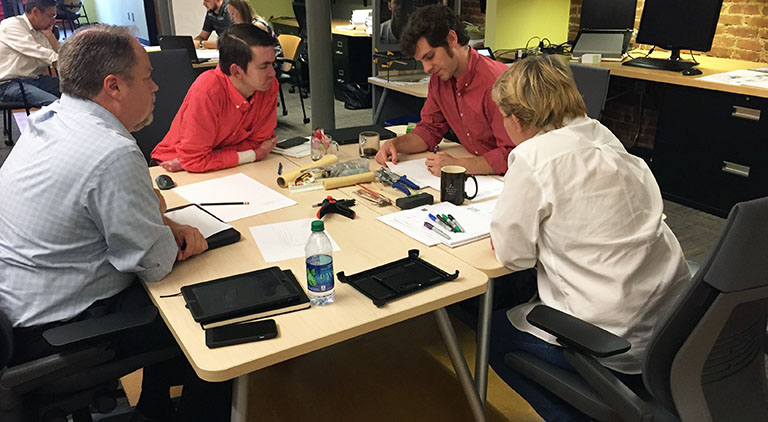
Why Pre Fab Lab? To remain diverse, vibrant and resilient, cities must be affordable. Technological advances in prefabrication are revolutionizing the design and construction of buildings. Quality control, efficiency, and sustainability make modular prefabrication an increasingly popular method of delivering affordable housing that is both innovative and attractive.
How it started: We’ve been exploring prefabrication’s possibilities for over a decade. In 2004 we partnered with Vanke, one of the world’s largest real-estate companies, to help them create a prefabrication strategy that could address China’s high paced housing demand without sacrificing quality. In Pittsburgh, we’ve been working with Tree Pittsburgh to design a prefabricated, modular headquarters that is on track to attain net-zero energy. The Edge on 4 in Louisville and the St. Ambrose Apartments in Cincinnati are both prefab housing developments.
Inside the lab: Over the course of 2017, we held charrettes with developers, fabricators, and community stakeholders. The charrettes examined prefabrication from three angles: the module, site strategies, and the technical innovations driving fabrication, sustainability, and logistics.
The exhibit: We shared our research and results at lively exhibits in Cincinnati and Pittsburgh and at an interactive panel in Louisville. We welcomed colleagues, industry peers, and members of the community into our offices to learn about prefabrication and modular design’s potential for creating mixed-income housing that combines sustainability, flexibility, shared amenity spaces, and cutting-edge design.
Download (DIS) 2017 Book
(DIS) 2016: C'mon Space, Whatcha Gonna Do For Me?
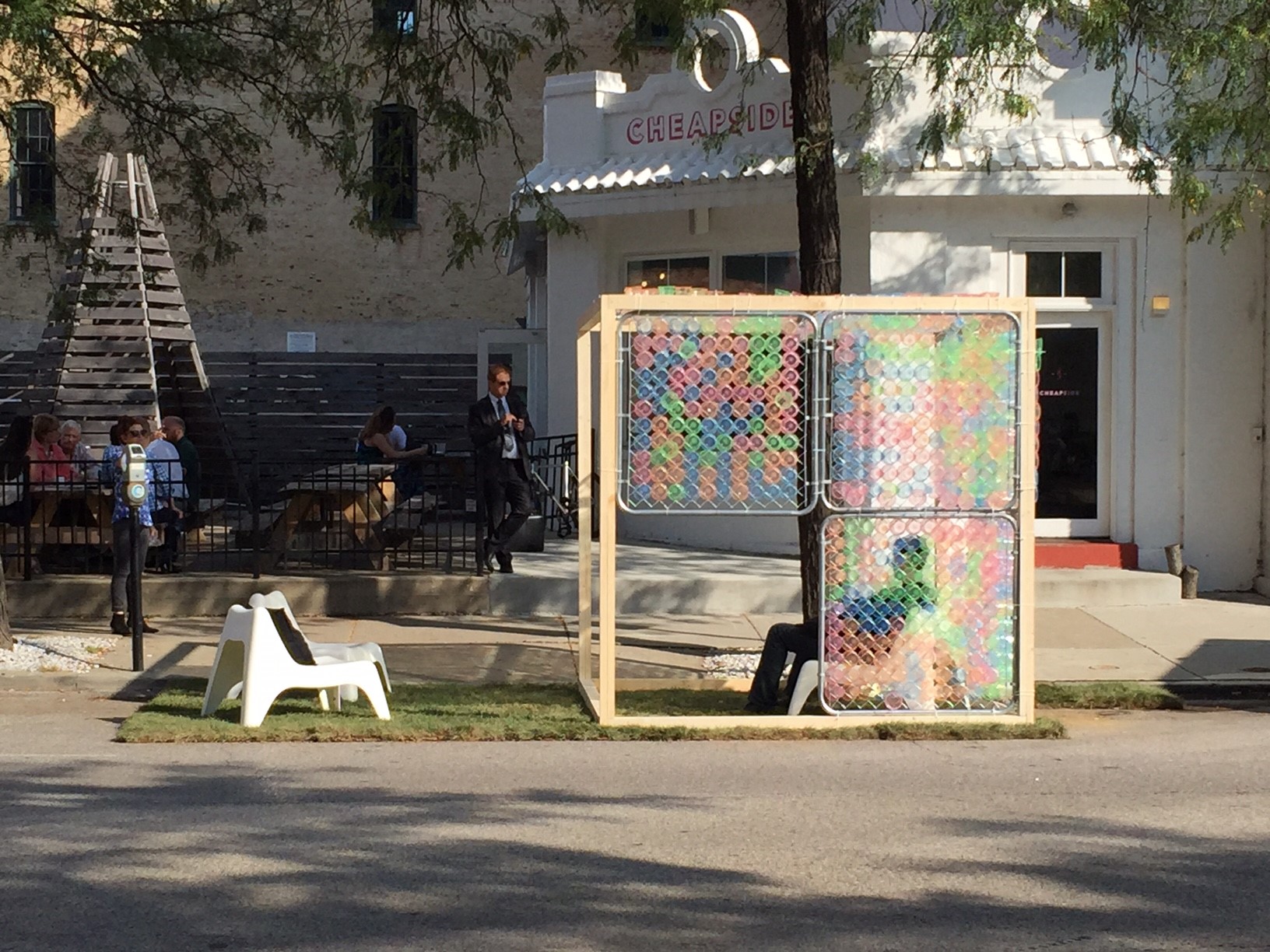
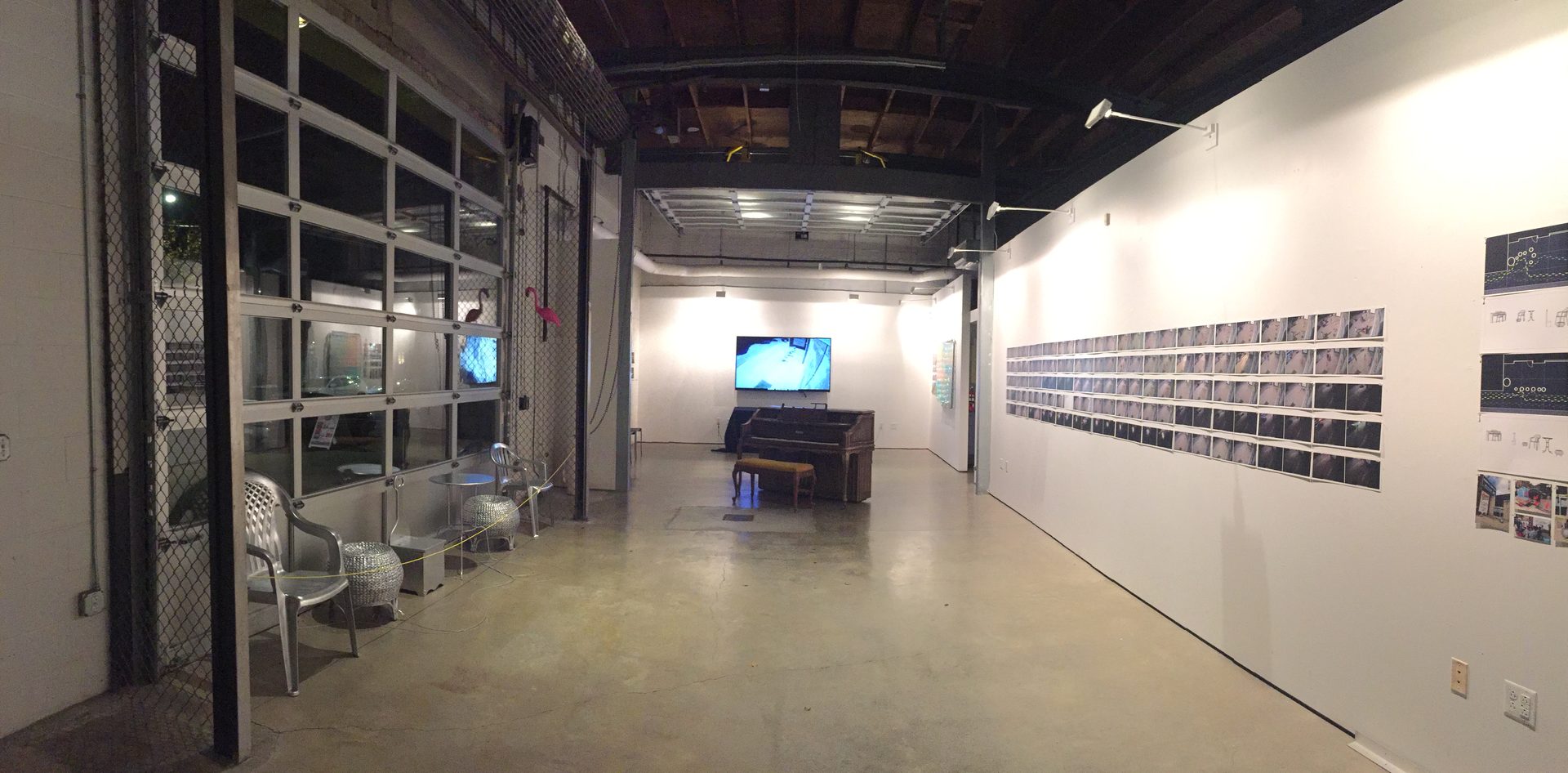
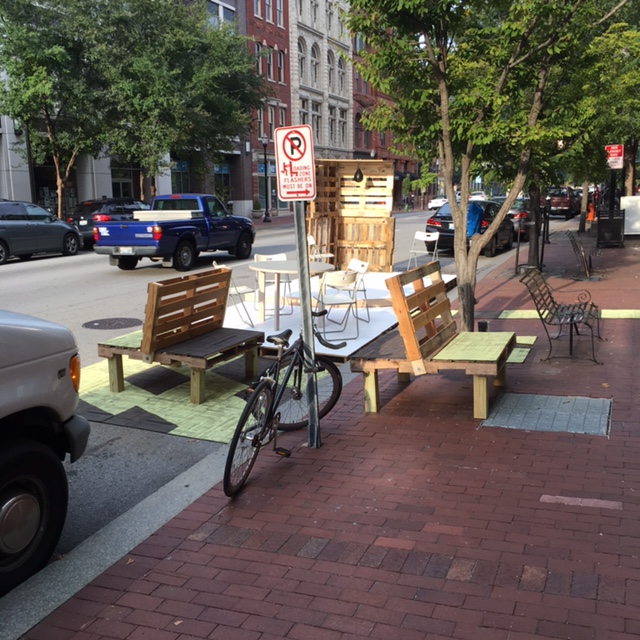
C’mon Space, Whatcha Gonna Do For Me? was designed to push our Common Space research even further by installing temporary, interactive displays in the public spaces around our office buildings in Cincinnati, Louisville, and Pittsburgh. In 2014, GBBN launched an extensive study that led to our Common Space research. We built upon that during our 2016 Design Expedition to Toronto, where we observed and documented a wide variety of common spaces.
Our goals for DIS 2016 were to advance our Common Space research, engage in collective observation, and process our data in a fun, imaginative way for the DIS exhibit in each office. C’mon Space officially kicked off on PARK(ing) Day in September 2016 with pop up installations providing lounge seating in parking spaces adjacent to each of our buildings. After Park(ing) Day, we moved seating pieces onto the sidewalks outside our offices and continued our observations for another month.
Through photography, time-lapse video, sketches, diagrams, and written narratives, the exhibitions summarized our research findings and presented both the successes and failures of common space. Each office put a unique spin on engaging the public: Pittsburgh’s installation included a working piano; Louisville created seating and a punching bag booth from shipping pallets; and Cincinnati crafted a cube using chain link fencing and plastic cups that could be arranged in three different shapes: Cube, shelter, and seat. Each installation was an opportunity to observe and document the way pedestrians interacted with the materials.
(DIS) 2015: The Digital in Design and Making
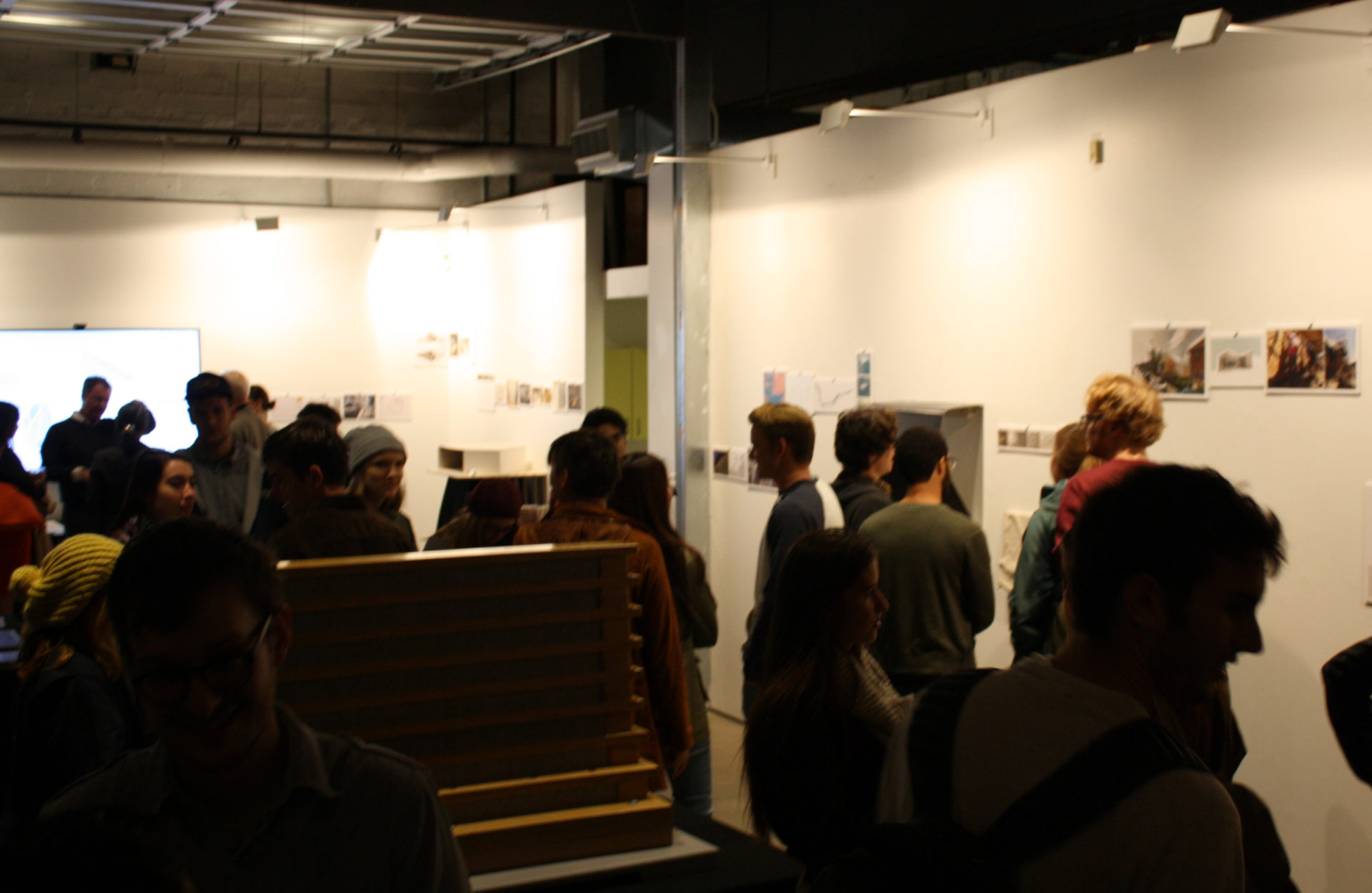
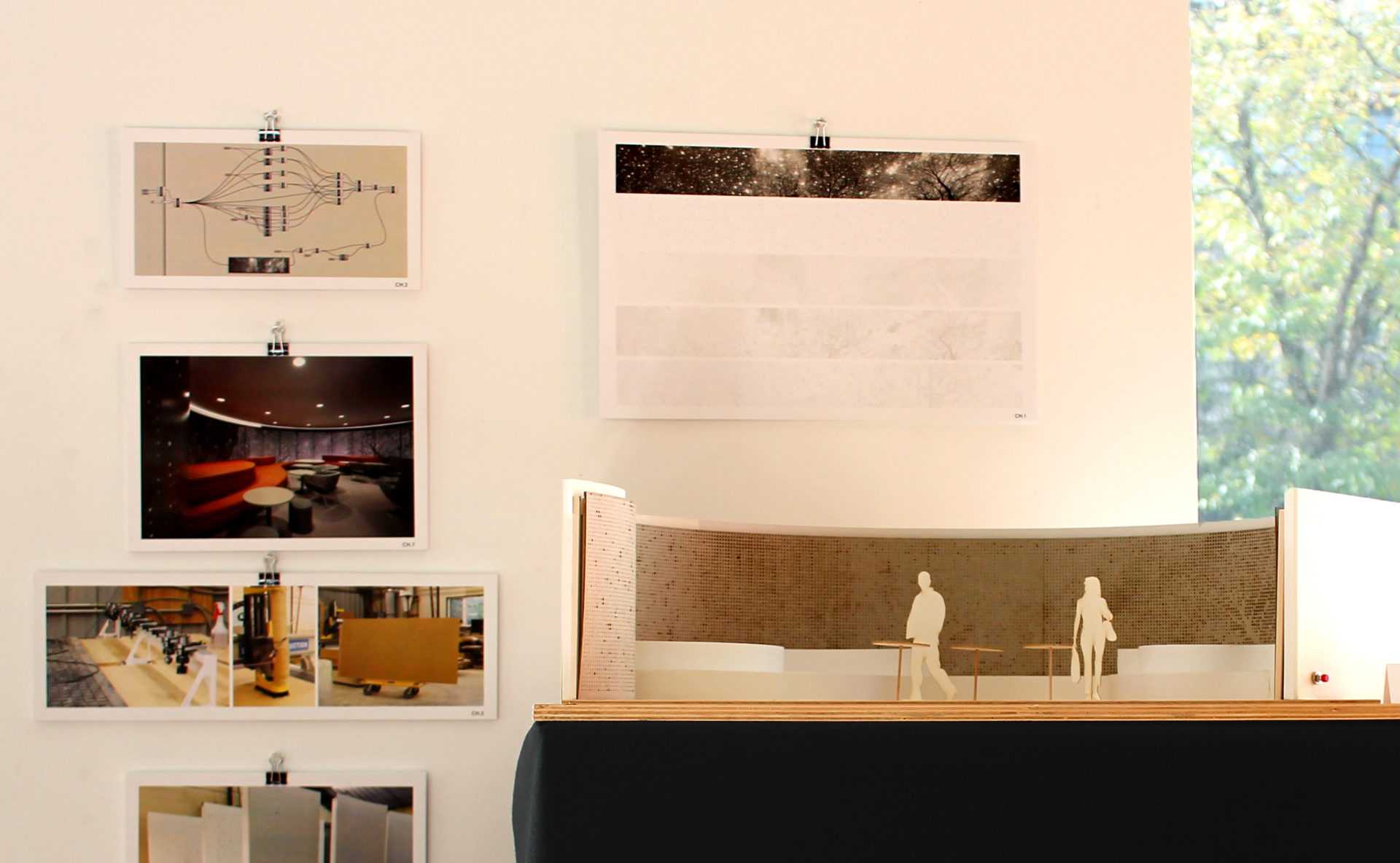
Our inaugural DIS exhibition shared the many ways GBBN leverages digital technology in design. We gathered existing content to clearly describe the narrative of digital and making in each architectural project. The exhibits included sketches, video, digital, and physical models, images, and mock-ups from all three U.S. offices.
The images and artifacts in this exhibition only begin to scratch the surface. Delivering architecture is a monumental process. From client to architect to consultant to contractor to fabricator, each phase of the project requires passionate people to recognize the importance of the experiential quality of space and performance in the built environment. Digital tools allow the team to visualize the potential of each project by testing various options and conditions as we craft thoughtful design solutions.



